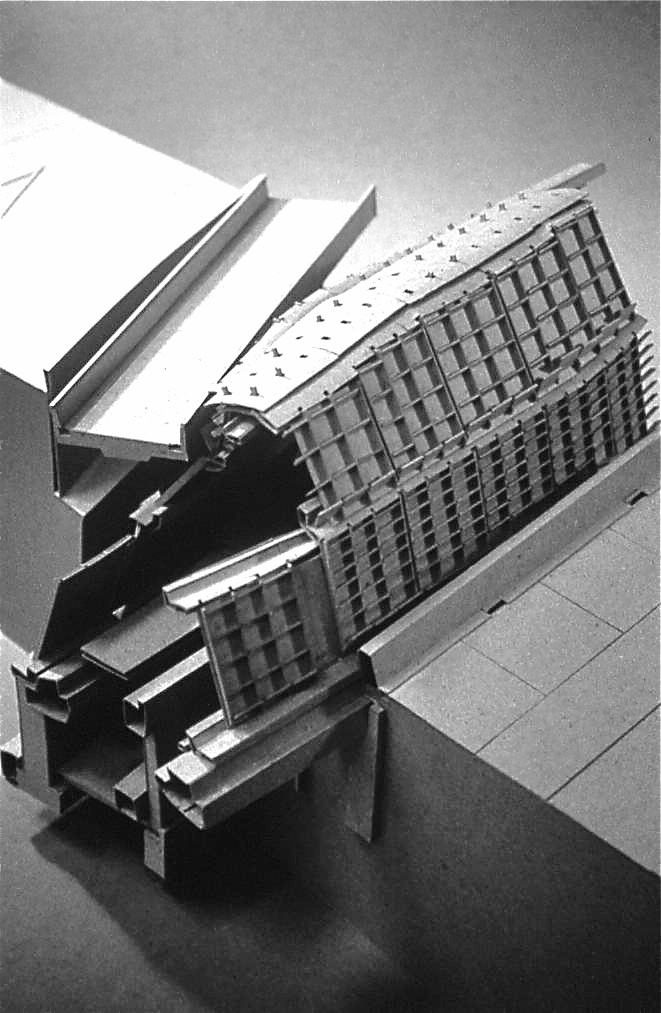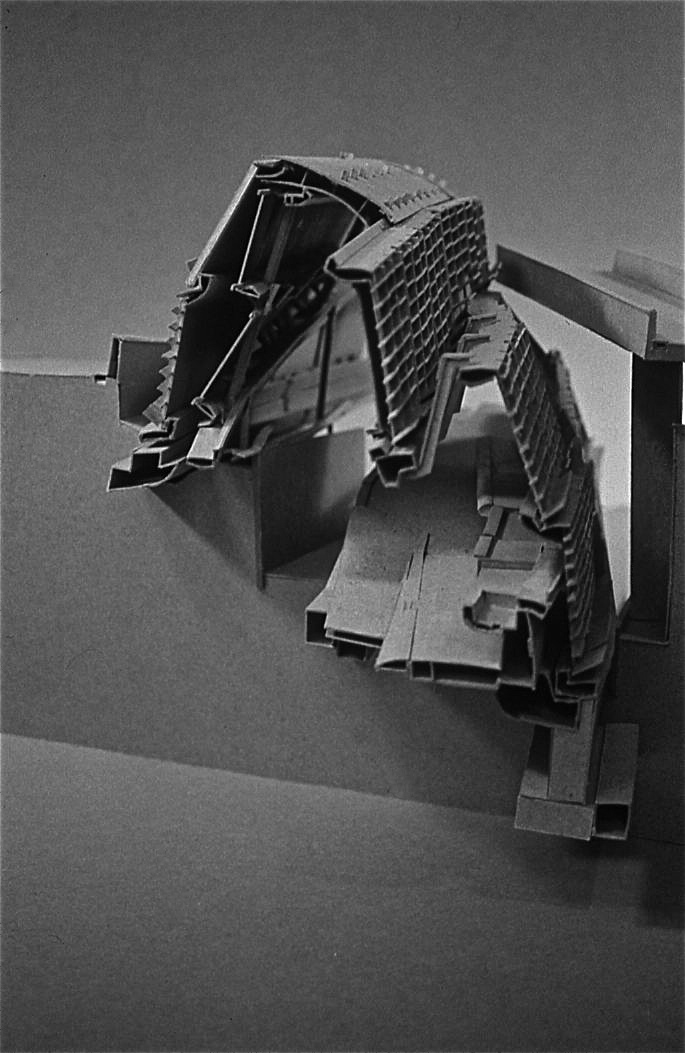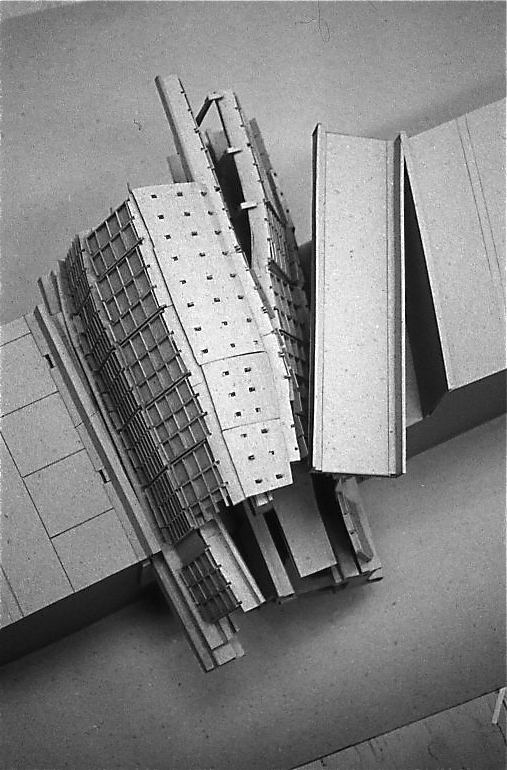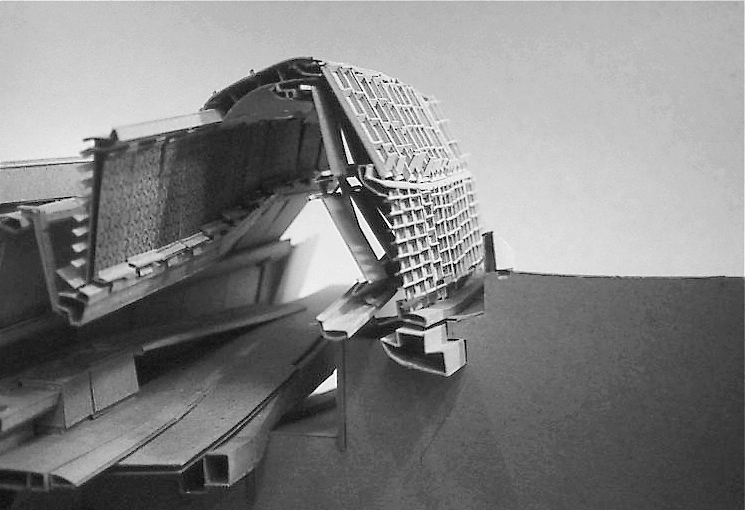Split-Level Sod House 1994
"The simple beginning is something so insignificant in itself, so far as its content goes, that for philosophical thinking it must appear as entirely accidental."
Hegel - Aesthetics
In the American suburbs manufactured materials typically dictate and orthogonal and typological homogeneity. This proposal for a split-level home (The Soddy) seeks to extract programmatic and formal variation from two specific suburban items - the lawn, and the wallpaper strip. Suburban lawns and the sod farms that create them, operate by the procedural dictates of the of the strip, lawns are mowed in strips, sod is cut in strips, and on the interior of the house - wallpaper is hung in strips. For the Soddy, an analysis of these everyday phenomena, as seen by way of the sod farm and the hanging methods for overlapping wallpaper, result in the creation of a previously invisible and woven spatial condition.
The Sod Farm
Sod farms exist in tandem with the suburbs by supplying them with the much needed ground cover that conceals the manufactured nature of the inserted infrastructure buried beneath them. Rectilinear and as utterly flat as possible, the sod farm, like the subdivision, seeks a condition of near-zero topographic change in order to maximize profit. Within this economic flatness, hidden topographic variation resides inside the excess circulation of the sod cutter (an excess condition which is also present in the required overlap for wallpaper and in the path of travel of the lawnmower or vacuum cleaner as they maintain a lawn or the living room carpet). From this/these banal condition, the Soddy derives strand-like spaces that are fractured internally in a coordinated tempo with the external needs of the sod cutter as moves of the house-landscape.
The Soddy can adapt to any site condition, however the images offered illustrate the Soddy as a split-level home anchored within the sectional variation of an abandoned Railroad yard in Des Moines, Iowa. Railroads, like sod farms, work toward zero topographical change. The classic split-level home does the opposite (it creates topography as the result of its own economic driver which comes by way of the dictate which does not allow soil to be removed from the job site. Ultimately the Soddy resists classification as a set typology - the Soddy operates less to produce isolated objects (homes) and more to facilitate a programmatic mix of new and extant conditions. The Soddy is simultaneously farm, house, Railroad, street, neighborhood, and landscape.
The Soddy has been published in the Korean Journal Space, Columbia University's Abstract, and Newsline, Kansas State University's Journal Oz and was awarded the Lowenfisch Memorial Prize in 1994. The Soddy was prepared under the supervision of Jesse Reiser at Columbia University.
The Lawn and its Internalized Counterpart


















